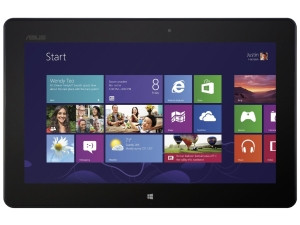
Computing giant Microsoft is reportedly cutting the price of its Windows software for small tablets, to enable it to compete with market leader Apple.
Sources with knowledge about Microsoft's plans told Bloomberg that Microsoft is using the changes to attract more manufacturers to use Windows RT for their small tablet devices.
The sources were, however, unable to provide the price of Windows RT after the licence fee cut. Windows RT was released along with Windows 8 last year and is Microsoft's answer to iOS and Android's dominance in the smart mobile device segment.
Figures
According to the International Data Corporation (IDC), Windows entered the top five mobile operating systems for the first time as it shipped a combined 900 000 units of its Surface RT and Surface Pro tablets in the first quarter of 2013.
The IDC said Windows tablets struggled to gain traction in the market, with combined Windows 8 and Windows RT shipments across all vendors reaching 1.8 million units.
Apple remained the top vendor, selling more than 19 million of its iPads in the first quarter of 2013. Its operating system, however, came in second after Android, which holds more than 56% of the market share.
Program manager for IDC's mobility tracker program, Ryan Reith, said Microsoft has to adapt to current market trends to remain competitive in the sector. "Clearly, the market is moving toward smart seven- to eight-inch devices, but Microsoft's larger challenges centre around consumer messaging and lower cost competition. If these challenges are addressed, along with the desired screen size variations, then we could see Microsoft make even further headway in 2013 and beyond."
Adoption
Acer announced the release of the world's first eight-inch tablet running on Windows 8, at Computex, yesterday. But the manufacturer is also using the Android system for its other devices and steering clear of Windows RT.
Acer chairman JT Wang told Bloomberg in an interview that Windows RT is still a "very immature" operating system. "We have some R&D projects, but we will be very, very cautious in deciding whether we will do the launch and mass production."
Dell is also busy developing a Windows RT tablet, while HTC is going ahead with its plans for a seven-inch tablet running RT. Microsoft's own Surface, however, is the only RT tablet that is widely available.
Welcome upgrade
While Microsoft is trying to push its mobile operating system for tablets, it has also developed an upgrade for Windows 8 for desktops and laptops. This follows a lukewarm reception and critique of the system, with many consumers voicing their grievances.
With the release of Windows 8.1, or Windows Blue as it's more commonly known, Microsoft is bringing back the Start button.
Windows 8.1 has also made adjustments to its search function, allowing users to search for documents, apps and items on the Internet from one search bar.
The upgrade will be free and made available to all Windows 8 users later this year. Developers will have the chance to put 8.1 through its paces when Microsoft showcases a test version at its developer conference at the end of the month.
Last month, Microsoft's CFO and CMO, Tami Reller, said Windows Blue will deliver innovations across an increasingly broad array of form factors, of all sizes, display, battery life and performance.
"It will provide more options for businesses, and give consumers more options for work and play. The Windows Blue update is also an opportunity for us to respond to the customer feedback that we've been closely listening to since the launch of Windows 8 and Windows RT. From a company-wide perspective, Windows Blue is part of a broader effort to advance our devices and services for Microsoft."
Reller also claimed Microsoft had sold more than 100 million licences at that point in time. The number included Windows licences that ship on new tablets or PCs, as well as upgrades to Widows 8.
Share